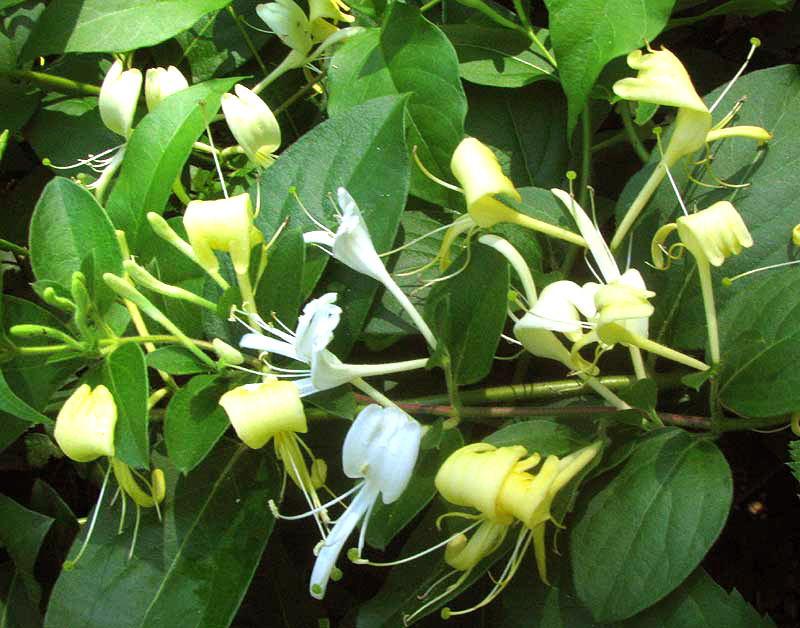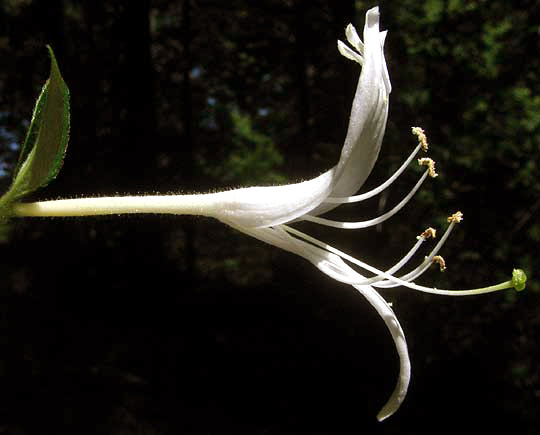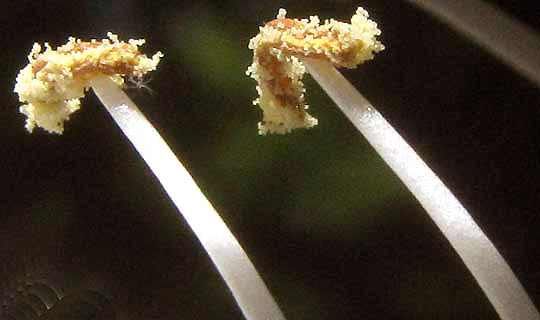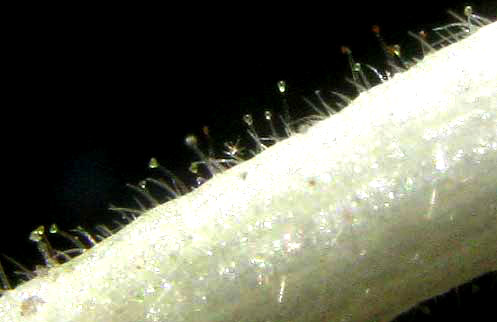Excerpts from Jim Conrad's
Naturalist Newsletter

from the the May 13, 2012 Newsletter issued from the woods of the Loess Hill Region a few miles east of Natchez, Mississippi, USA
JAPANESE HONEYSUCKLE
Sometimes in the calmness of late afternoon a vagrant breeze from the forest's overgrown edge carries a fragrance so sweet and evocative that I have to go look, even though I know it just comes from a big tangle of weedy Japanese Honeysuckle, LONICERA JAPONICA.
But, even though Japanese Honeysuckle makes the list of "Mississippi's Ten Worst Invasive Weeds," it's worth looking at closely. For example, a glance at a random gathering of flowers evokes a certain pathos, as shown above.
Notice that only a few flowers are pure white, the rest being yellowish. To pollinators, many of whose eyes are attuned to the ultraviolet spectrum, the yellow flowers are less visible than the white. That's what the vine wants, for only the white ones are sexually receptive. The yellow flowers already have been pollinated. The vine is saying to the pollinator, "Don't waste your energy on these less visible blossoms... "
An individual honeysuckle blossom is a graceful thing to see, a form worthy of meditation, as shown below:

See how the first item an approaching pollinator touches is the knobby stigma at the picture's far right? That's where pollen from other flowers is daubed, first thing. Then as the pollinator continues into the flower's throat searching for the nectar, brownish, hatlike anthers dusted with pollen grains are encountered next, the pollen ready to hitch a ride to the pollinator's next blossom. But, are those graceful curves really necessary? Wouldn't straight filaments and style have done as well? Maybe, but the effect wouldn't have been as elegant. What does the curve in a honeysuckle filament mean, what does it mean?
And look more closely at those pollen-encrusted, brown anthers at the tips of their filaments, below:

And see the glandular hairs coating the corolla's slender tube below:

The closer you look, the more majestic, and the more forgiving you feel for this one of the "ten worst."